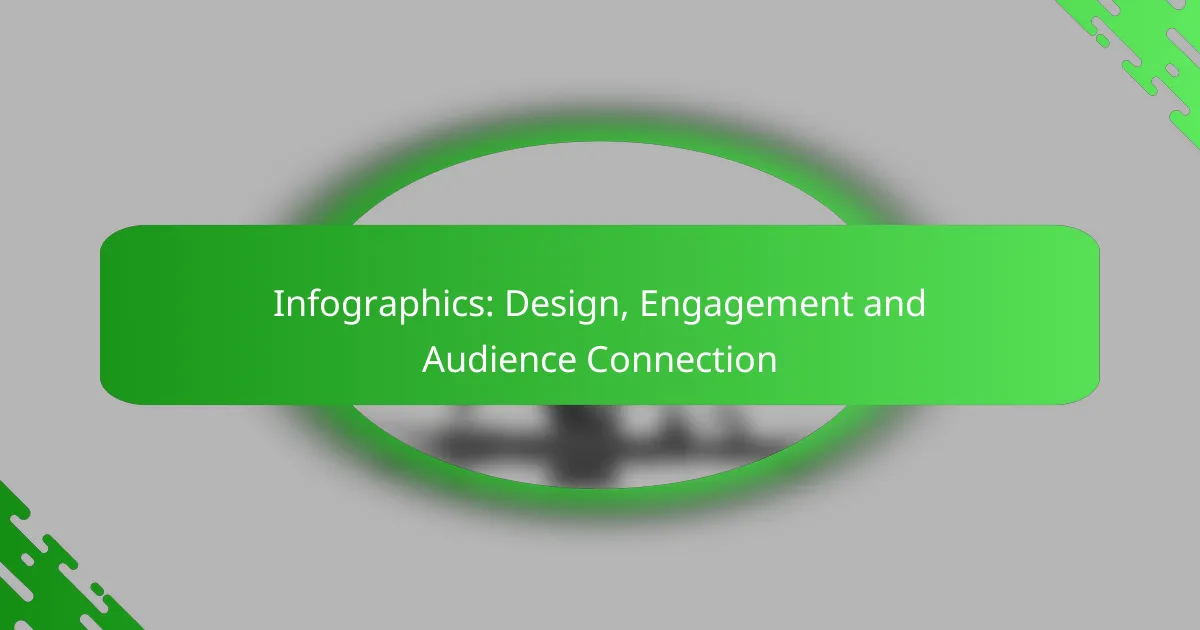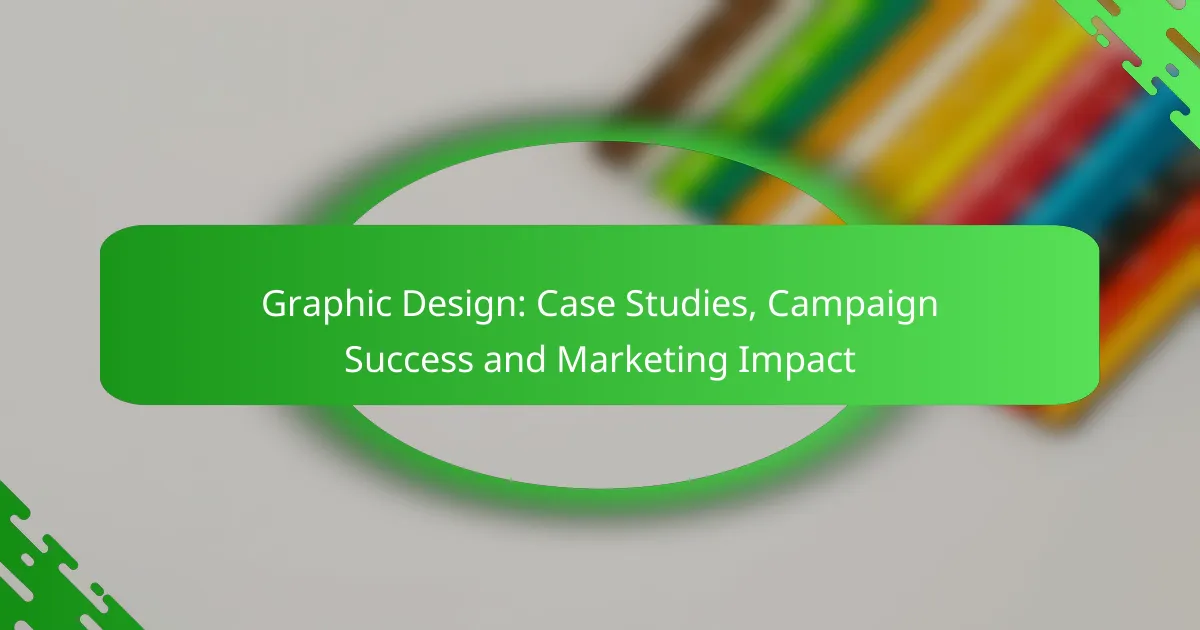Graphic design is essential for improving email marketing open rates, as it creates visually appealing content that captures attention and conveys messages effectively. By employing key design practices such as minimalism, color psychology, and clear call-to-action buttons, marketers can significantly enhance engagement and encourage recipients to take action. Utilizing tools like Canva, Adobe Spark, and Mailchimp can further elevate the visual appeal of email campaigns, making them more impactful.

How can graphic design improve email marketing open rates?
Graphic design plays a crucial role in enhancing email marketing open rates by creating visually appealing and engaging content. Effective design elements can capture attention, convey messages clearly, and encourage recipients to take action.
Effective subject line design
Subject lines are the first impression of your email and can significantly influence open rates. A well-designed subject line should be concise, compelling, and relevant to the content of the email. Using action-oriented language and personalization can increase engagement.
Consider A/B testing different subject lines to see which resonates best with your audience. Aim for a length of around 40-50 characters to ensure visibility on most devices.
Visual hierarchy in email layout
Establishing a clear visual hierarchy helps guide readers through your email content. Use headings, subheadings, and bullet points to break up text and highlight key information. This makes it easier for recipients to scan and understand your message quickly.
Utilize contrasting colors and font sizes to differentiate between sections. A well-structured layout can lead to higher engagement and lower bounce rates.
Use of engaging images
Incorporating high-quality images can enhance the visual appeal of your email and make it more engaging. Images should be relevant to the content and optimized for fast loading to avoid frustrating recipients.
Consider using a mix of graphics, such as infographics or product images, to convey information effectively. Aim for a balance between text and images to maintain a clean and professional look.
Brand consistency in design
Maintaining brand consistency in your email design reinforces brand identity and builds trust with your audience. Use consistent colors, fonts, and logos that align with your overall branding strategy.
Ensure that the tone and style of your emails reflect your brand’s personality. This consistency helps recipients recognize your emails and increases the likelihood of them opening future communications.
Responsive design for mobile
With a significant portion of emails being opened on mobile devices, responsive design is essential for maximizing open rates. Emails should automatically adjust to different screen sizes, ensuring readability and usability.
Test your email designs on various devices and email clients to ensure a seamless experience. Prioritize a single-column layout for mobile to enhance readability and engagement.

What are the best practices for email design?
Effective email design enhances engagement and boosts open rates. Key practices include a minimalist approach, understanding color psychology, and incorporating clear call-to-action buttons.
Minimalist design approach
A minimalist design focuses on simplicity, reducing clutter to highlight essential elements. This approach helps recipients quickly grasp the message without distractions, improving the likelihood of engagement.
To implement a minimalist design, use ample white space, limit the number of fonts to two or three, and avoid excessive images. Aim for a clean layout that guides the reader’s eye toward the most important content.
Color psychology in email marketing
Color psychology plays a crucial role in influencing emotions and behaviors. Different colors can evoke specific feelings, which can affect how recipients perceive your brand and message.
For instance, blue often conveys trust, while red can create a sense of urgency. When designing emails, consider using colors that align with your brand identity and the desired emotional response. A/B testing different color schemes can help determine what resonates best with your audience.
Clear call-to-action buttons
Clear call-to-action (CTA) buttons are vital for guiding recipients toward desired actions, such as making a purchase or signing up for a newsletter. A well-designed CTA stands out visually and uses action-oriented language.
Ensure your CTA buttons are large enough to be easily clickable on both desktop and mobile devices. Use contrasting colors to make them pop, and place them strategically within the email to maximize visibility. Common pitfalls include using vague language or burying CTAs within dense text, which can lead to lower engagement rates.

Which tools enhance graphic design for emails?
Several tools can significantly improve graphic design for emails, enhancing visual appeal and engagement. Popular options include Canva, Adobe Spark, and Mailchimp, each offering unique features tailored for email marketing.
Canva for email graphics
Canva is a user-friendly design platform that allows users to create stunning email graphics with ease. It offers a wide range of templates specifically designed for email campaigns, making it simple to customize visuals that align with your brand.
Key features include drag-and-drop functionality, a vast library of images and icons, and the ability to collaborate with team members in real-time. Canva’s free version provides ample resources, while the Pro version unlocks advanced features like brand kits and premium templates.
Adobe Spark for visual content
Adobe Spark is another powerful tool for creating visual content for emails, focusing on storytelling through graphics. It allows users to design eye-catching images, videos, and web pages that can be integrated into email campaigns.
With its intuitive interface, Adobe Spark makes it easy to produce high-quality visuals quickly. Users can choose from various templates and customize them to fit their messaging, ensuring that the content is both engaging and relevant.
Mailchimp design features
Mailchimp offers built-in design features that streamline the process of creating visually appealing emails. Its email builder includes customizable templates, a drag-and-drop editor, and a variety of design elements to enhance your campaigns.
Additionally, Mailchimp provides tools for A/B testing and analytics, allowing you to assess the effectiveness of your designs. This feedback can guide future design choices, helping you optimize open rates and overall engagement with your audience.

What metrics indicate successful email design?
Successful email design can be gauged through key metrics such as open rates, click-through rates, and conversion rates. These indicators help assess how effectively your email engages recipients and drives desired actions.
Open rates tracking
Open rates measure the percentage of recipients who open your email, reflecting its initial appeal. A typical open rate can range from 15% to 25%, depending on the industry and audience. To improve this metric, focus on crafting compelling subject lines and ensuring your emails are mobile-friendly.
Consider segmenting your audience to tailor content more effectively, which can lead to higher open rates. Regularly testing different subject lines through A/B testing can also provide insights into what resonates best with your audience.
Click-through rates analysis
Click-through rates (CTR) indicate the percentage of recipients who clicked on links within your email. A good CTR typically falls between 2% and 5%, but this can vary widely based on the content and industry. To enhance CTR, ensure that your calls to action (CTAs) are clear, visually distinct, and strategically placed.
Utilizing engaging visuals and concise text can also encourage clicks. Regularly reviewing which links receive the most engagement can help refine future email designs and content strategies.
Conversion rates evaluation
Conversion rates measure the percentage of recipients who complete a desired action, such as making a purchase or signing up for a newsletter. This metric is crucial for assessing the overall effectiveness of your email campaigns. A conversion rate of 1% to 3% is often considered acceptable, but higher rates can indicate successful targeting and messaging.
To boost conversion rates, ensure that your landing pages are aligned with the email content and provide a seamless user experience. Additionally, offering incentives, such as discounts or exclusive content, can encourage recipients to take action.

How does visual appeal affect customer engagement?
Visual appeal significantly influences customer engagement by capturing attention and conveying brand identity. Well-designed emails can lead to higher open rates and better interaction, as recipients are more likely to engage with visually appealing content.
Impact on brand perception
The visual elements in email marketing directly shape how customers perceive a brand. Consistent use of colors, fonts, and imagery that align with brand identity fosters recognition and trust. For instance, a sleek, modern design can suggest innovation, while a colorful, playful layout may convey creativity.
High-quality visuals can enhance the perceived value of a product or service. Brands that invest in professional design often see improved customer loyalty and increased sales. Customers are more likely to associate attractive designs with quality, leading to a stronger emotional connection.
To optimize brand perception, ensure that your email design reflects your brand’s voice and values. Avoid cluttered layouts and focus on a clean, organized presentation. Regularly update your design elements to keep them fresh and relevant, aligning with current trends while maintaining brand consistency.



